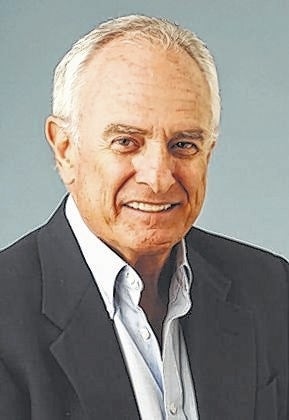Columnist: Reminders stand for those lost to war
Published 12:00 am Tuesday, October 20, 2015

NEW VICTORY, Tenn. – This unincorporated community reflects easy living in the rolling hills of East Tennessee where there are green pastures, a lively creek and a landscape dotted with modest houses with harvest scenes already in place. Makes you think that simple and hard-working folk, with a bent for church, family and flag dominate the population in this countryside.
New Victory is near Jonesborough, the first capital of the Volunteer state. The community’s centerpiece is best identified by two churches: the New Victory United Methodist Church and the New Victory Baptist Church, each standing sentry to a cemetery, the latter bringing about the reason for coming here.
After arriving in Knoxville by charter plane, I had asked my friends Gene Hartman, a self-made man with impressive business credentials, and John Majors, the one-time Tennessee football coach with a historical bent, if they would accompany me on this trip to see the marker of the Tester brothers who grew up in New Victory. Accommodating friends heightens the anticipation of any excursion, and I was grateful to be in the company of these old friends.
They were unaware of the story of the three native sons of New Victory who were killed in World War II. A family gives up three of its sons to America’s cause, making the ultimate sacrifice to help rid the world of Nazi terrorism.
I had learned of their story after visiting the American Cemetery in Henri Chapelle, Belgium, last summer. After stopping first at the cemetery at Margraten, The Netherlands, where every grave at the American cemetery has been adopted by a Dutch family, I was introduced to the superintendent at Henri Chapple, Bobby Bell.
A native of Northwest Florida, Bell was a hospitable host whose thorough knowledge of World War II and the cemeteries in that area of The Netherlands and Belgium was illuminating. He was hosting an eager visitor on a tour of the cemetery when he suddenly stopped and said: “Here are buried the Tester brothers who hailed from the same little community in East Tennessee.”
Losing one son would be bad enough, but the Testers had to endure the dreaded knock on their door three times. Not only did they lose their sons, they never got to visit their graves. With the passing of time, likely there are few in the community who relate to the tragic story. The marker from the Tennessee Historical Commission provides the details, but for all too many, this is just another cemetery that is a reminder that we live, we die and the world moves on.
You stand near the marker, you read its tribute to the Tester brothers and you experience a sinking feeling with respect to the tragic story of these members of the Greatest Generation. So often it is the poor, the less well off, who give their sons to the cause of war.
For years, I have been visiting cemeteries in Europe and not just the Allied cemeteries and seem to always find these tragic reminders about war. In the little French town of Goutrens there was an obelisk which revealed that one family gave up four of its sons in World War I, likely before they could have stated families of their own.
Most Americans are drawn to the U. S. cemetery at Colleville-sur-Mer and the nearby monuments to our invasion success on the beaches in 1944. Most of them fail to spend time at the Germany cemetery at La Cambe.
It was there that I discovered the story of a German girl whose father was killed while her mother was pregnant. She left a poignant note at her father’s grave: “On my third trip here, I still cannot meet you. How many more daughters will never know their fathers because of war?”
World War II saw teenage men give their lives to the Allied cause. It is why we continue to mourn these men, many of whom volunteered. Like the Tester brothers: Robert Dent Tester, who died in North Africa in 1943, James Earle Tester, who died in Germany in 1944 and the last, Glenn W. Tester whose life ended in France in 1945.
There are 30 sets of brothers buried at Henri Chapelle, another reminder that many American mothers began grieving in early middle age, and it continued until they evolved into old age. Can you imagine living with such heartache over the loss of three sons who never had a chance to fulfill their dreams, to start a family of their own?
Years later one feels for the Tester family who received the backhand of fate, not one but thrice.



